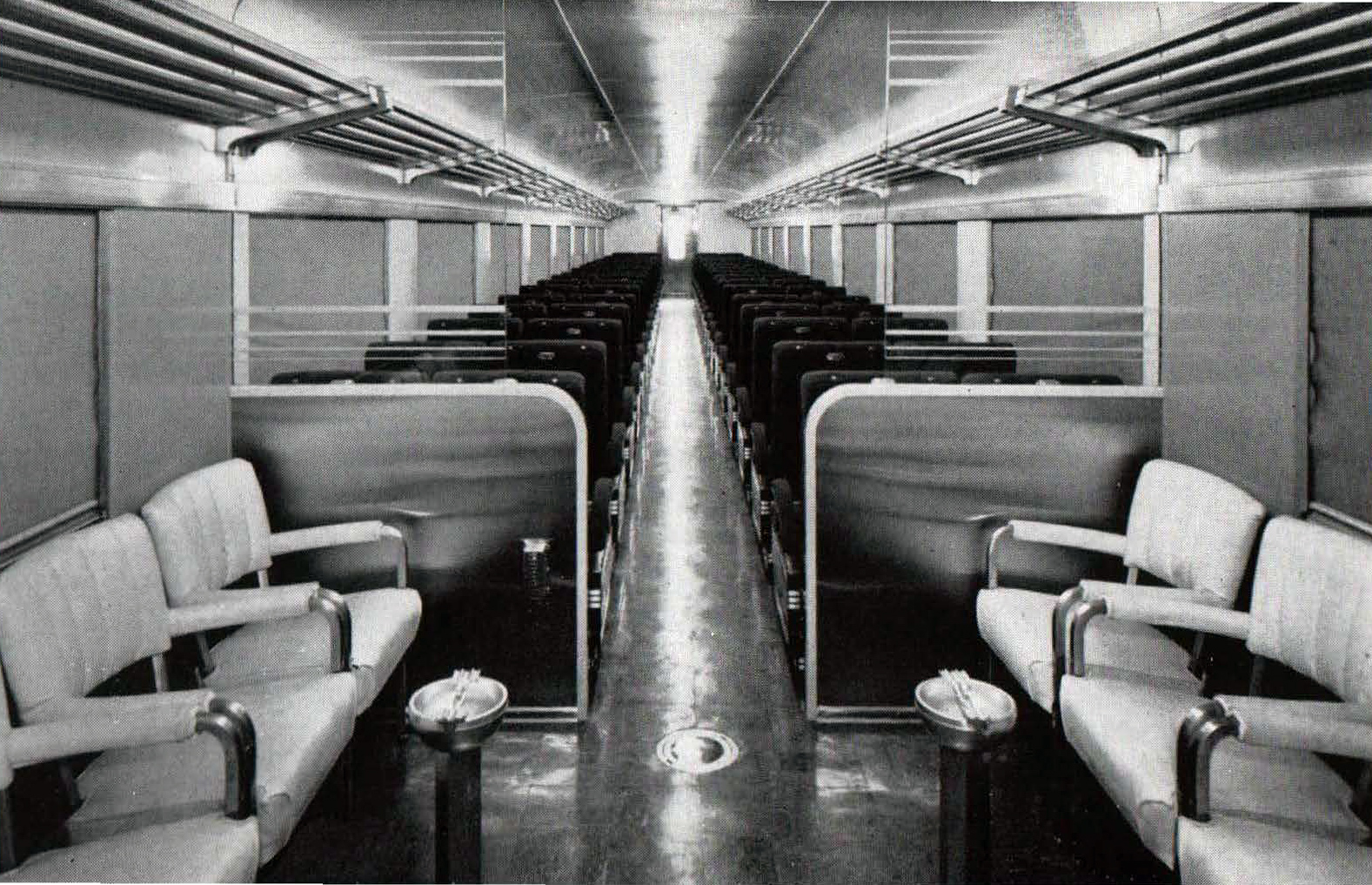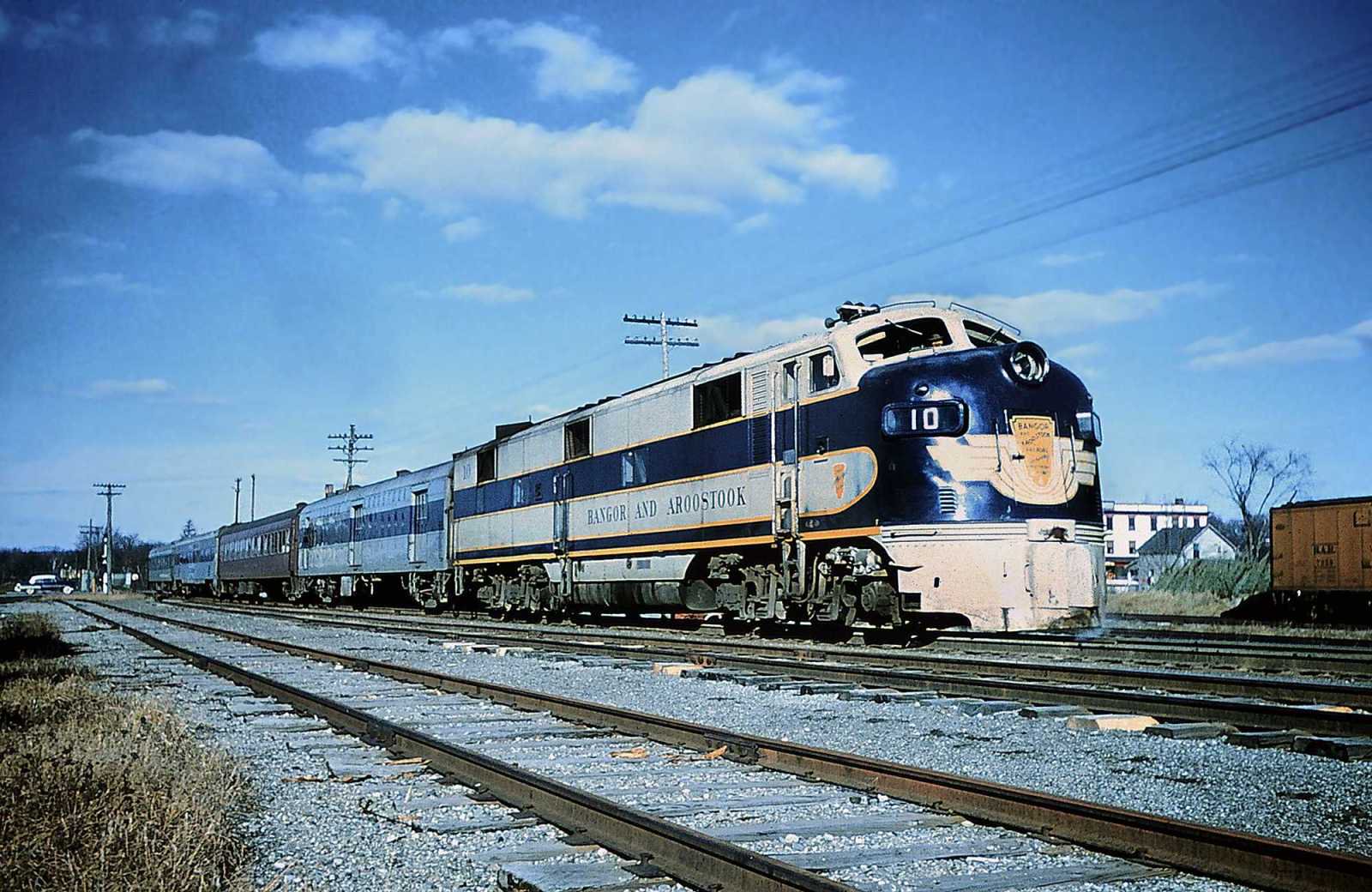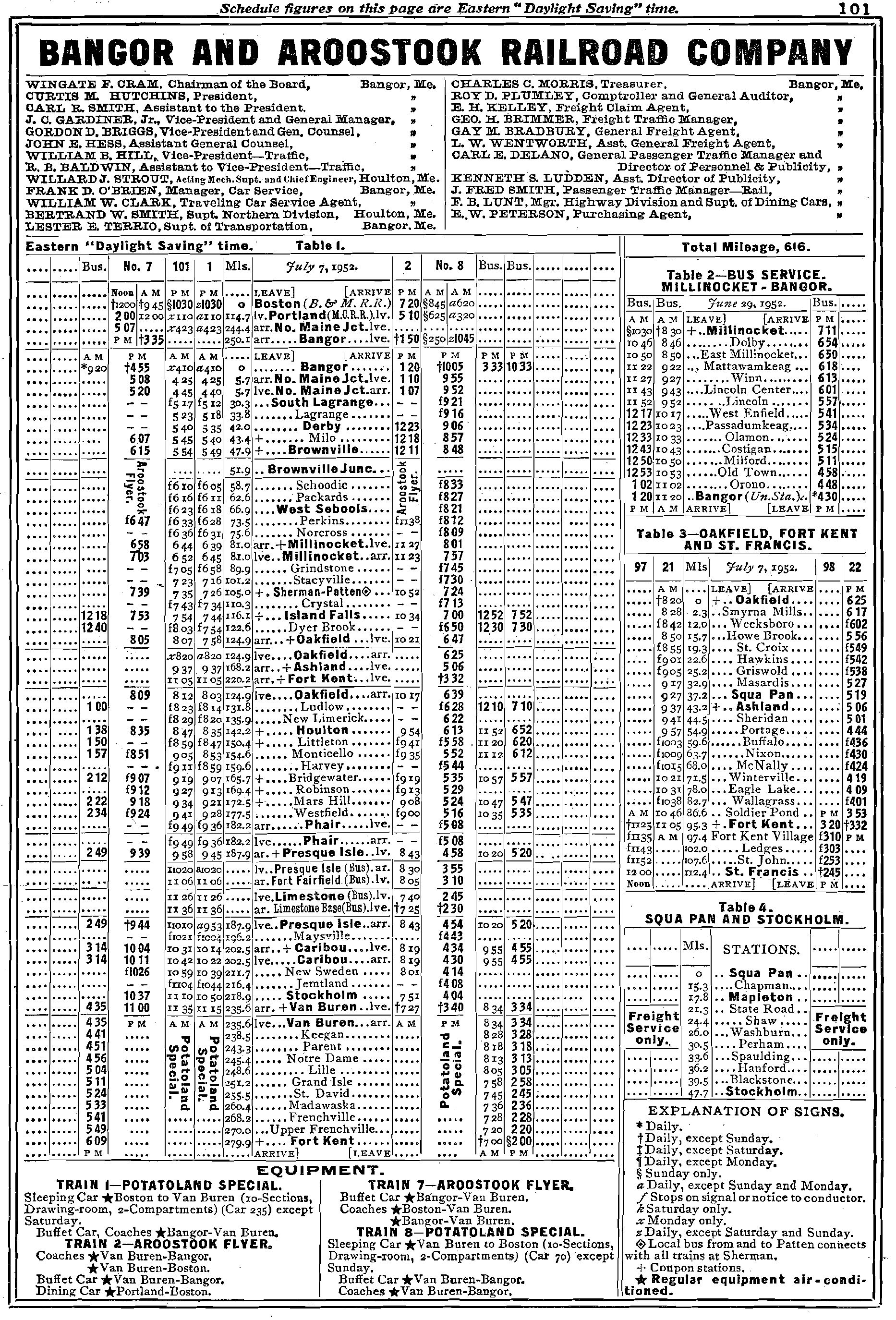The "Aroostook Flyer": A Dayliner To Van Buren, ME
Last revised: September 15, 2024
By: Adam Burns
In a different era, when rail travel was common and one could find high quality service across the nation, even small railroads provided first-class accommodations.
This was certainly the case in regards to the Bangor & Aroostook, a relatively small system which served Northern Maine. The company proudly proclaimed this as its official logo, "Serving Northern Maine."
The railroad even entered the streamlined fray by fielding two trains with lightweight equipment, a dayliner known as the Aroostook Flyer and the overnight Potatoland Special.
While they carried only short consists, the services were first class- nothing short of impressive considering the BAR's size. The trains' success was sadly shortlived, however. As ridership waned the railroad canceled both in the early 1960s.
Photos
History
The Bangor & Aroostook was tucked away in the upper fringes of Maine, connecting the coastal ports of Bangor and Searsport with the border of New Brunswick in the state's vast northern emptiness.
Interchange with the Canadian National was carried out at St. Leonard via Van Buren, Maine. The BAR's principal trains, the Potatoland Special and Aroostook Flyer, were launched in the 1930s and ran the entire length of the railroad's system from Bangor to Van Buren.
At its southern terminus (Bangor) connections were made with the Maine Central where travelers could continue journeying southward if they so chose. The 230-mile corridor could be completed in about 6 1/2 hours.
Such quick transit meant a round trip was carried out during the waking hours; southbound train #2 would leave Van Buren early in the morning and arrive in Bangor during the early afternoon while northbound train #7 departed Bangor later that afternoon and returned to Van Buren before Midnight.
In spite of this fast service the BAR still provided an overnight counterpart, the Potatoland Special (trains #8, southbound, and #1 northbound). It offered a through sleeper (running six days of every week) that connected to Boston traveling over the Maine Central and Boston & Maine to reach North Station.
These nightly trains were once a popular way to travel all around the country, particularly those on business, and this was no different on the Special whose through sleeper was especially tailored to such clientele.
Timetable (October 29, 1956)
| Read Down Time/Leave (Train #7/Northbound) | Milepost | Location | Read Up Time/Arrive (Train #2/Southbound) |
|---|---|---|---|
| 5:35 PM (Dp) | 0.0 | 12:10 PM (Ar) | |
| 5:45 PM (Ar) | 5.7 | 12:00 PM (Dp) | |
| 5:57 PM (Dp) | 5.7 | 12:00 PM (Ar) | |
| 42.0 | 11:10 AM | ||
| 6:52 PM | 43.4 | 11:05 AM | |
| 7:02 PM | 47.9 | 10:57 AM | |
| F 7:35 PM | 73.5 | F 10:21 AM | |
| 7:47 PM (Ar) | 81.0 | 10:09 AM (Dp) | |
| 7:51 PM (Dp) | 81.0 | 10:05 AM (Ar) | |
| 8:28 PM | 105.0 | 9:33 AM | |
| 8:44 PM | 116.1 | 9:16 AM | |
| 8:58 PM (Ar) | 124.9 | 9:02 AM (Dp) | |
| 9:03 PM (Dp) | 124.9 | 8:58 AM (Ar) | |
| 9:25 PM (Ar) | 142.2 | 8:35 AM (Dp) | |
| 9:30 PM (Dp) | 142.2 | ||
| 150.4 | F 8:22 AM | ||
| F 9:45 PM | 154.6 | F 8:16 AM | |
| F 10:00 PM | 165.7 | F 8:01 AM | |
| F 10:05 PM | 169.4 | F 7:56 AM | |
| 10:12 PM | 172.5 | 7:51 AM | |
| F 10:18 PM | 177.5 | F 7:43 AM | |
| 10:33 PM (Ar) | 187.9 | 7:26 AM (Dp) | |
| 10:45 PM (Dp) | 187.9 | ||
| 11:05 PM (Ar) | 202.5 | 7:02 AM (Dp) | |
| 11:13 PM (Dp) | 202.5 | ||
| F 11:25 PM | 211.7 | 6:45 AM | |
| 11:36 PM | 218.9 | 6:33 AM | |
| 11:59 PM | 235.6 | 6:10 AM |
Prior to the days of diesel power the Aroostook Flyer was led by a variety of steam power according to Kevin Holland's book, "Passenger Trains In Northern New England, In The Streamline Era."
Most often a 4-6-0 or ubiquitous 4-6-2 was upfront but on occasion even an elderly 4-4-0 was used until the World War II era. Diesels, in general, were late to the BAR which did not purchase a single example until a fleet of eight F3As arrived (500A-507A) between October, 1947 and May, 1948.
Two of these units, #506A-507A, were specially equipped with steam-generators and inaugurated diesel-powered passenger service on May 14, 1948. These were supplemented a year later by a pair of E7As, #700-701, in April, 1949 - the only two the railroad owned.
Streamlined Era
Both the Es and Fs were adorned in an attractive livery of blue and grey sporting a winged-shield on the nose that included the company logo. Around this time the railroad took delivery of three lightweight, 68-seat coaches - which featured a 12-seat smoking section - from Pullman-Standard.
These cars (including #250 Katahdin, #251 Chippewa, and #252 Mohawk) sported a stainless-steel look, not unlike Budd's designs, with a large blue band across the window area to match the locomotives.
Along with this equipment the BAR utilized its small fleet of "American Flyer" car a typical consist of the Aroostook Flyer including the lead diesel (F3A or E7A), an American Flyer buffet-lounge, and the three new streamlined coaches.
Consist and Timetable (1952)
 An interior view of one of the lightweight coaches the BAR purchased from Pullman-Standard in 1949. In the foreground is the smoking section.
An interior view of one of the lightweight coaches the BAR purchased from Pullman-Standard in 1949. In the foreground is the smoking section.Cancellation
The Bangor & Aroostook fielded a handsome and elegant duo of streamliners considering its small size.
For more than a century the railroad carved out an existence for itself primarily in the movement of timber products and agriculture - potatoes were an especially important source of traffic.
As the public abandoned trains for highways and airlines, the BAR recognized it was time to exit the business, ending all remaining trains by 1961. The railroad may have, perhaps, continued scheduling service after this time had it not been for the loss of through service over the Maine Central, which discontinued passenger operations entirely during September of 1960.
Sources
- Holland, Kevin J. Passenger Trains Of Northern New England, In The Streamline Era. Lynchburg: TLC Publishing, 2004.
- Schafer, Mike. More Classic American Railroads. Osceola: MBI Publishing, 2000.
Contents
Recent Articles
-
Oregon Railroad Museums: A Complete Guide
Apr 25, 25 03:11 PM
With its rich tapestry of scenic landscapes and profound historical significance, Oregon possesses several railroad museums that offer insights into the state’s transportation heritage. -
North Carolina Railroad Museums: A Complete Guide
Apr 25, 25 02:56 PM
Today, several museums in North Caorlina preserve its illustrious past, offering visitors a glimpse into the world of railroads with artifacts, model trains, and historic locomotives. -
New Jersey Railroad Museums: A Complete Guide
Apr 25, 25 11:48 AM
New Jersey offers a fascinating glimpse into its railroad legacy through its well-preserved museums found throughout the state.



